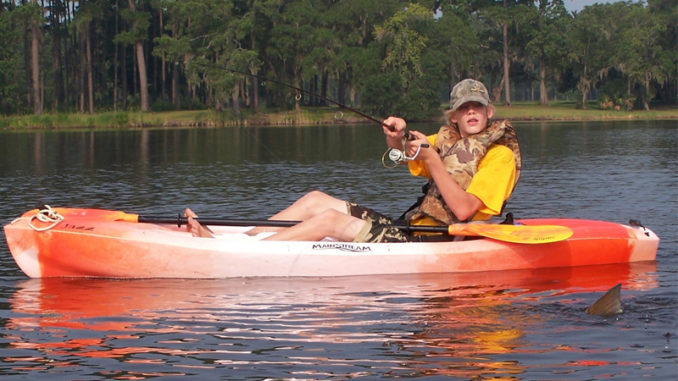
Kayak anglers can get tight to a variety of inshore species
Inshore kayak fishermen dream of October. The redfish, flounder and trout you’ve been chasing all summer suddenly seem to materialize and cooperate.
The most-likely reason is that cooler water starts to arrive. This prompts baitfish to move from any number of small nooks and crannies in the marsh. They like more open water like tributary creeks and waters closer to the open ocean.
Once the mullet runs start in the Carolinas in earnest, you can target whatever fish you want. But there’s no guarantee what will be on the end of the line when you feel that solid thump.
Most paddling anglers opt for fishing with live bait. It’s fairly easy to throw a cast net a few times around any small creek mouth or drainage ditch. You’ll surely find something a predator fish might eat. Trolling buckets more popular in days gone-by still work. But they also act as a parachute. That’s not a good idea if you like to paddle in a straight line. To combat this, you can pull the bucket into the kayak when you’re paddling. Or you can use a bucket on either side of the boat to balance the drag.
Coolers make great live wells for bait
Another great idea is to fill up the tank well of your kayak with one of today’s modern, heavily insulated coolers. Add a battery-powered air pump and air stone to keep the water oxygenated. Now you can transport enough live bait to last through an all-day paddling trip.
As for the tides, inshore fish love to move up toward grass lines as the tide rises. They’ll feed around the edge of the grass or up in the grass. As the water falls, they will move out to the edges of the oyster bars or the drop-offs.
Baitfish, shrimp and even crabs are on the move. And all of the major inshore species, plus a handful more, love to be around food. Kayak anglers looking for baitfish along the edges of creek mouths will find fish that powerboats overlooked.
If there are baitfish in an area, chances are high that something will soon be along, feeding during some phase of the tide. You have to work at catching fish by looking for the right combinations or baitfish, current, and structure.
Using a popping cork is a great way to distinguish your bait from the thousands of baitfish in that area. Rigging a hook anywhere from 1 to 3 feet below the cork, adding a split shot or two to keep the bait down below the cork, lets you cast up current, popping the bait to cause commotion and attract attention, and position the bait in the strike zone.
First kayak redfish
Most kids grow up fishing crickets or worms under a bobber for bream in a farm pond or off a dock at a lake somewhere. At some point they get surprised when something larger takes the bait and the cork zooms out of sight, bending the rod over in the process.
Fortunately, these occurrences happen enough that when a youngster gets his first chance to paddle around in a borrowed kayak with one of his father’s rods tucked under his leg, he knows what to do.
The mud minnow he’s towing around is doing its job, just being bait. The 24-inch redfish that lived in the state-park pond was impressed enough with the bait’s performance to eat it for breakfast. The snatch and grab mustered enough force to drive the point of the hook into the corner of the redfish’s mouth.
Meanwhile, topside, there was reeling to do. Grabbing the bent rod and raising the tip into position allowed the rod to do it’s job while the reel screamed in protest. Like a rodeo star trying to hang on for 8 seconds, the kid spun the kayak in three complete circles before the fish tired and came to the side of the boat.
That’s how you catch your first kayak redfish.

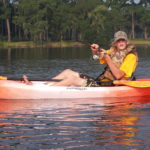
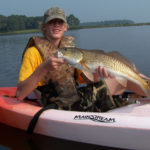

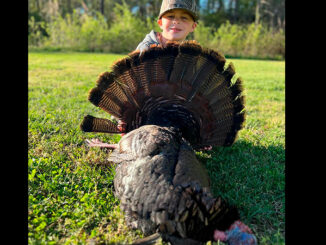
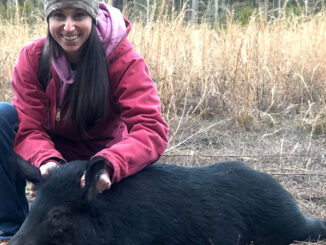

Be the first to comment